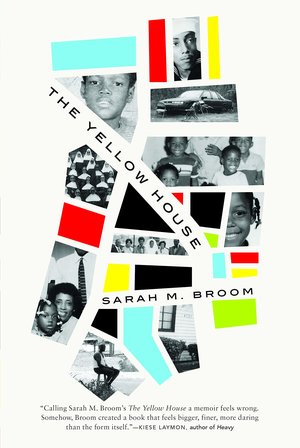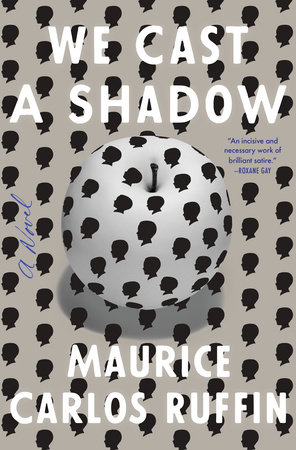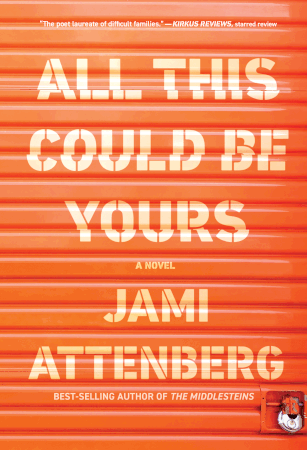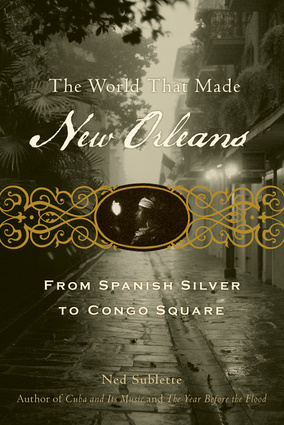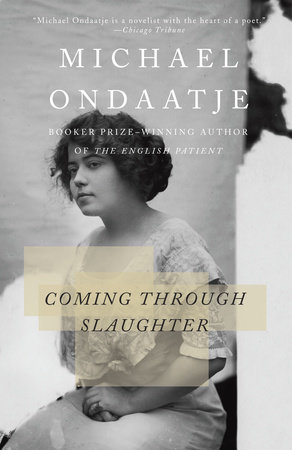Reading Lists
7 Books Set in New Orleans That Go Beyond Mardi Gras
Fiction that offers a window into life in NOLA

New Orleans. Here’s a mini list of what I think comes up for the uninitiated or the casual traveler: French Quarter debauchery. Pastel shotgun cottages of Treme and columned plantation houses on St. Charles Avenue. The romance of the old-fashioned streetcars chugging down that avenue and now through to the Bywater. Beads thrown on Mardi Gras Day. The city submerged after Hurricane Katrina. Beignets and crawfish. Second line parades.
All of the above are true, per tourism board and media portrayals. But New Orleans defies one—or a million—quick platitudes of who and what it is. There is always another face, another layer of history and of the present, and another jolt of energy swirling, stewing—be it its history, recent and ancient, or the hurricanes blowing in from the Gulf—in the city, a below sea level bowl wedged between the Mississippi and Lake Pontchartrain.
For seven years, I lived on a street that ended in the historic (as is everything in New Orleans) Bayou St. John, and in a house from which I could hear Jazz Fest. During this time, I worked at a literary festival, held in honor of Tennessee Williams. I spent much time considering books about the city, how it was portrayed, the transplant class and gentrification-on-speed, and much else. There are a ton of lists for old-time picks (Google away!) and there are many works that illuminate the city’s specificities. On the latter, random but, I think, excellent, suggestions would include this anthology on the iconic Baby Dolls edited by Kim Vaz-Deville, this study of Congo Square by Freddi Williams Evans, this characterful short story collection by Fatima Shaik, Royce Osborne’s classic film of black Mardi Gras, and the outside choice from my earliest memory of learning about the city, Paul Schrader’s extremely 80s of remake of Cat People, for David Bowie’s theme song, and the slick visual design upon New Orleans’ own gothic character. I could go on but for now, the hugely subjective list below, however, hews to recent titles by contemporary New Orleanians and a few personal older favs.
Having been born and grown up in other sediment-rich estuary cities and lived in several entrancing metropolises since, I know well the impossibility of ever fully knowing a place, especially one as charismatic, complex, and contested as New Orleans. Still, these books offer different windows, into, for me, the most interesting city, the most American and the least American city in America.
The Yellow House: A Memoir by Sarah M. Broom
In The Yellow House, Sarah M. Broom offers the story of her family’s home—and a view into a city that is rarely seen by outsiders. Her tour begins by swerving away from the usual New Orleans landmarks like the French Quarter (though she later returns to this with both the extra-piercing gaze of both a native and a returnee who’s lived around the world) via the Chef Menteur Highway to New Orleans East. Broom writes: “By bringing you to here, to the Yellow House, I have gone against my learnings. You know this house not all that comfortable for other people my mother was always saying.” As readers, we can count ourselves lucky she did—and did so with such exacting reporting on the histories of her family and city in especially elegant prose. The National Book Award judges agreed—Broom’s memoir made the organization’s 2019 nonfiction shortlist.
We Cast A Shadow by Maurice Carlos Ruffin
We Cast A Shadow is meant to be set in a white supremacist future America, where a black man is attempting to get his biracial son a “demelanization” procedure to secure the boy’s future. The opening scene of a soiree in a mansion on the “Avenue of the Streetcars,” however, reads as only ever so slightly out there. The unnamed narrator, a lawyer, notes: “She was one of the good ones, even if, as she once drunkenly admitted to me in a stalled elevator, she sometimes fantasized about wearing blackface and going on a crime spree. After shattering storefront windows and mugging tourists by the Cathedral, she would wash the makeup from her face, content in the knowledge that the authorities would pin her deeds on some thug who actually had it coming.” Ruffin, a former lawyer, paints the scene of the city’s Uptown surrealism with a mini museum of multicultural gods and a library that includes a title called The Hip Hop Ontologist’s View of Leda and the Swan, an especially intriguing title I’d love to borrow from the author. By bending reality without excess throughout, Ruffin’s sleight of hand with the peculiarities of New Orleans, which goes unnamed in the book, is even more hilarious. But what he cuts apart about race in America, now and in the book’s future setting (where the past is not even past in elements like the Dreadlock Ordinance and the Black Panther-like ADZE group), is unsurprisingly not easy.
All This Could Be Yours by Jami Attenberg
Alex, comes to New Orleans when her father, a real estate developer, has a heart attack. The novel, Jami Attenberg’s first set in her adopted city, goes on to pick apart the family’s various dysfunctions, in pointed, raw prose that has become her signature. Alex, for example, almost tells a doctor, who gives her the news that her sick father hasn’t got much time left, “Do you promise?” The book zips around the city’s various neighborhoods, and is soaked in the boiling intensity of August in the city: “It has been hot since April. Was there ever a time when it was not this hot in New Orleans? They can no longer recall. Their will has been broken. Wake up, it’s hot. All day, hot. Nighttime, it feels cooler, but it’s a lie; it’s still hot. And wet. Everyone’s skin glows. Hide inside. Hydrate. Shield yourself. Too hot.”
Solitary: My Journey of Transformation and Hope by Albert Woodfox
Albert Woodfox begins with his childhood in New Orleans’ Sixth Ward but Solitary’s setting is two hours away from the city in the confines of the Louisiana State Penitentiary. Otherwise known as “Angola,” the prison is named after the plantation it is located on, which in turn was named for the country from which the enslaved there were taken. It is a maximum security prison farm, which holds a biannual rodeo open to visitors. Woodfox was sentenced to 50 years for an armed robbery, and spent close to 45 years in solitary confinement there. He was finally released in February 2016. The survival of his spirit and resolve is awe-inspiring. An angering and intensely powerful read, the book is on the 2019 NBA nonfiction short list.
The World that Made New Orleans: From Spanish Silver to Congo Square by Ned Sublette
Ned Sublette’s packed, pacy social history of early New Orleans is the title to purchase right after you book your flights to the city. Sublette, a musician and musicologist who is also a hell of a storyteller, frames the city’s history in the context of Europe, Haiti, and Cuba, centering its African influences while not averting his gaze from the brutalities of enslavement (as well as its obscuring in other accounts). While most of this won’t be in your average plantation tour (unless you are headed to Laura or the Whitney Plantation; maybe also support a show and/or buy works by contemporary black artists too) and none of it qualifies as light, it will make the city’s past feel absolutely real, and its musical cultures more stunning than you previously realized.
A Kind of Freedom by Margaret Wilkerson Sexton
In A Kind of Freedom, Margaret Wilkerson Sexton portrays the New Orleans lived by three generations of an upper-middle-class black family in the city’s Seventh Ward neighborhood. Beginning in the mid-forties, Sexton traces the family through the 1980s to 2000s and shows how their fortunes change dramatically with Jim Crow and continued systemic racism. Sexton’s debut is both a feast of prose and story. Deservedly, it landed on the National Book Award long list in 2017, an incredible year, which included the eventual winner and great chronicler of the black Gulf South, Jesmyn Ward with her Sing, Unburied, Sing.
Coming through Slaughter by Michael Ondaatje
Set in Storyville, the infamous nightlife district of New Orleans at the turn of the last century, Coming through Slaughter has at its center a highly-fictionalized Buddy Bolden, the legendary cornet player, who is considered the progenitor of jazz, and of whom very little is known. Ondaatje adds the equally enigmatic photographer E.J. Bellocq, who photographed the sex workers of Storyville, to the mix. In its utter disregard for conventions of anything, all-over-the-place pronoun- and time-jumping, and the text’s unbearably alluring confusion, sensuality, and madness (as jazz, perhaps), Slaughter (a reference to a town near Baton Rouge, but to much else too) feels like New Orleans to me. Case in point is this scene of a threesome:
“Then Bolden did a merciless thing. For the first time he used his cornet as jewelry. After the couple had closed their door, he slipped in a mouthpiece, and walked out the kitchen door, which led to an open porch. Cold outside. He wore just his dark trousers and a collarless white shirt. With every sweet stylised gesture that he knew no one could see he aimed for the gentlest music he knew. So softly it was a siren twenty blocks away. He played till his body was frozen and all that was alive and warm were the few inches from where his stomach forced the air up through his chest and head into the instrument. Music for the three of them, the other two in bed, not saying a word.”




